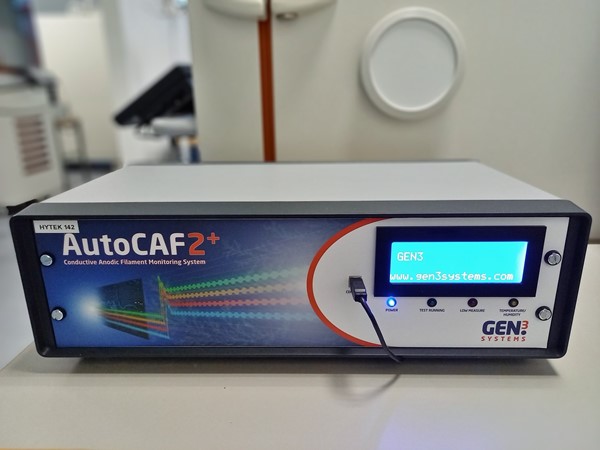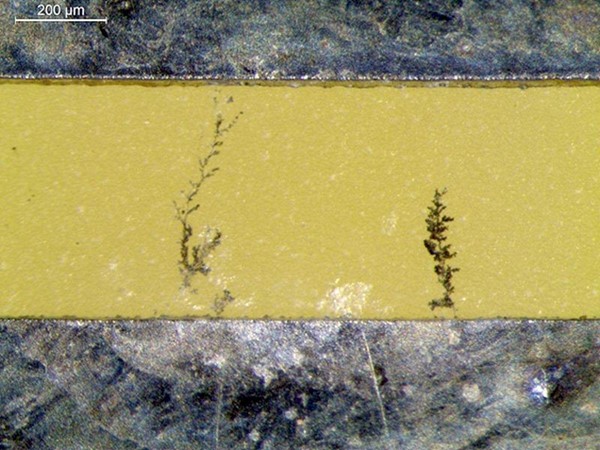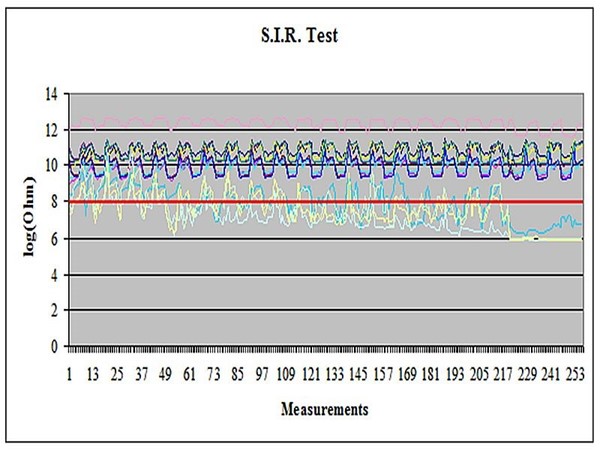When electronics are used in a humid environment, this can cause contamination on the surface of the printed circuit board and thus form electrochemical migration (dendrites) e.g. between conductor tracks. Temperature Humidity Bias (THB) testing exposes an electronic product to a combination of temperature and humidity. THB tests can help identify potential insulation problems and Electro Chemical Migration (ECM) on electronic products, e.g. due to contamination on printed circuit boards. THB testing is an important part of the quality control of electronic products both externally on printed circuit boards, SIR (Surface Insulation Resistance) and internally in PCB, CAF (Conductive Anodic Filament).
The Surface Insulation Resistance (SIR) test measures the electrical resistance between two electrically insulated surfaces or conductor tracks. A high SIR value (>100MO) indicates that the insulation is effective and can withstand a high voltage. A low SIR value indicates that dendrites may have occurred and could reduce the insulation capability with a risk of product failure.
The Conductive Anodic Filament (CAF) test is a specific type of THB test designed to test for CAF formation. CAF is ECM caused internally in the printed circuit board (PCB laminate) by an accidental connection between two potentials, e.g. due to the drilling process. In this case, Electro Chemical Migration (ECM) can occur and reduce the insulation capability with a risk of product failure.



THB, SIR and CAF test can, for example, be used for examination and analysis of:
Example of standards for THB, ECM, SIR and CAF test:





